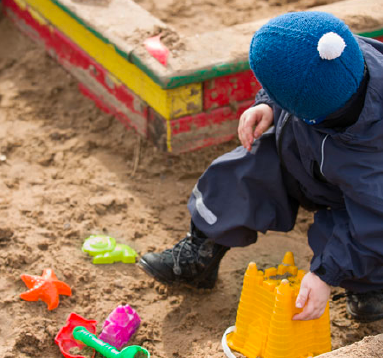What is Outdoor School? In the United States and Canada, there are a variety of different types of programs that all fall under the "outdoor school" umbrella. They are, in our experience, the following types:
- 1 Forest Schools
- 2 Nature Preschools & Kindergartens
- 3 Farm Schools
- 4 Waldorf & Rudolph Steiner Schools
- 5 Select Montessori Programs
- 6 Schools that have pivoted to outdoor education due to Covid 19

Forest Schools
Supports play, exploration, leadership development and supported risk taking in an open-air culture regarded as a way of life in Scandinavia, where the forest school concept began. Considered to be the most immersive type of outdoor school where little to no time is spent indoors except for extreme or dangerous weather days. Some programs do provide limited shelter as necessary. Risk is incorporated into the curriculum to allow the children to become healthy, resilient, creative and independent learners. Forest schools are located in a variety of locations from public parks and arboretums to actual forest lands. Make sure that the forest school you are considering is run by qualified forest school practitioners.

Nature Preschools & Kindergartens
Nature-based preschools are different from forest programs as not the entire day is spent outdoors. Nature-based preschools and kindergartens are programs where at least 30% of the class day is held outdoors. Nature is infused in all aspects of the program and typically rooted in the seasonal happenings of the outdoor world. Additionally, nature is integrated into the indoor spaces, and the play areas have an overall appearance of a natural area rather than structured play equipment. (Source: Samara Early Learning LLC)

Farm Schools
Such programs explore diverse eco systems on the farm. The mission of this type of outdoor school is to foster experiences that unearth the connection between nature, people, and sustainable food source. Students learn skills to develop and care for the earth, their fellow humans, and their own educations. The amount of time spent outdoors varies by program but in our experience averages at least 50% or more. (Source: Asheville Farmstead School)

Waldorf & Rudolph Steiner Schools
In Waldorf education, the Outdoor Curriculum often includes forest and farm early childhood programs, school gardens and outdoor horticulture study, science observation and environmental work, camping and hiking. Extensive outdoor free play is emphasized and multiple opportunities for outdoor class time in all subjects is universally important to the Waldorf focus. (Source: The Waldorf School of Garden City, NJ)

Select Montessori Schools
The Montessori philosophy and method emphasizes connecting to nature and inspiring wonder in children. Many of the classroom materials support nature discovery and research for connecting the outdoor environment with the indoor. Montessori programs strive to expose children early on to the beauty of the world around them. There is a lot of variety in the approach and amount of time spent outdoors among Montessori programs, so be sure to reach out to the individual school and ask them to explain their approach to incorporating the outdoors into their curriculum and how much time each day on average is spent outdoors? Look for programs where at least 30% of the day is dedicated to being outdoors.

Traditional Schools Pivoting to Outdoor Education
One of the bright spots of COVID 19 is that it has forced more standard indoor schools (both public and private) to find ways for their students to spend more time in the great outdoors! This is indeed a bright spot of the pandemic, as it has allowed a much broader group of children and their parents to appreciate the beauty and benefits of being outdoor while learning. We hope that this trend continues long after the pandemic is behind us.
Why send my child to an outdoor school?
Children, indeed all of us, need time to thoroughly explore our thoughts, feelings, and relationships. Outdoors, children develop a deep understanding of their world, the environment and everything in it. Through imagination and exploration, their world opens to endless possibilities. (Source: Magnolia Forest Preschool). A growing amount of research and study of outdoor education for young children has become available over the last 30 years. It is well documented that children's development can be enhanced greatly outdoors in a number of areas. The following are some of the top benefits that outdoor learning and outdoor activities provide for children. (source: Upper Manhattan Forest Kids)
 Leadership
Leadership Imagination & Creative Thinking Skills
Imagination & Creative Thinking Skills Motor Skills & Gross Muscle development Independence
Motor Skills & Gross Muscle development Independence Self Confidence & Resiliency
Self Confidence & Resiliency Strengthened Immune System
Strengthened Immune System Increased Spatial Sense & Awareness
Increased Spatial Sense & Awareness Beneficial to children with attention/control issues
Beneficial to children with attention/control issues
Bring healthy balance
Interestingly, natural light outdoors helps children to stay more alert during the day, elevate their moods and make it easier for them to sleep at night. Exposure to outdoor light in the morning actually helps set their body clock for a better and earlier night's sleep.
Experience more joy
Early experiences with the natural world have also been positively linked with a sense of wonder. This way of knowing and learning, if recognized and honored, can serve as a life-long source of joy and enrichment, as well as an impetus or motivation, for future learning. (Source: Ruth Wilson, PHD)
Live a more wondrous life
There are very few rules in the woods and the greater outdoors. They are limited to: taking care of yourself, taking care of others, not wandering too far away; that's pretty much it! Outdoor schools start your child off early living a rewarding and wondrous life while shoring up all kinds of physical and psychological benefits that will last an entire lifetime. What's not to like?

